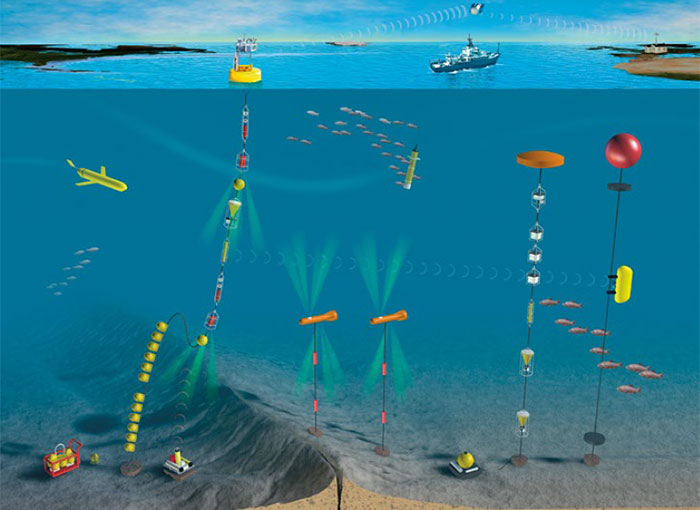Networked systems of multiple heterogeneous vehicles and distributed sensors
New underwater vehicles, in-situ sensors, and through-water communications capabilities will enable new approaches to oceanographic survey, observation, and monitoring. Teams of fixed and mobile platforms, including autonomous underwater vehicles, autonomous surface vehicles, bottom-mounted and moored instruments, and gliders will not only provide persistent spatial coverage, but will also give each other critical communication and navigation capabilities. Satellite connectivity to shore for surface vehicles will also give human operators the ability to analyze data and reprogram the vehicles as needed.
These elements can be combined in many different ways to address oceanographic problems in a variety of settings. Such an approach could, for example, play a critical role in long-term environmental monitoring of deepwater and Arctic oil and gas fields, particularly where conventional power and communications infrastructure is not available, such as during the exploration phase or after a field has been shut down. The strength of these approaches will be based on recognizing the complementary nature of different communications modalities and platforms and on combining them in new ways to address important problems.
Principal Engineers
Dana Yoerger
Senior Scientist, WHOI
Richard Camilli
Associate Scientist, WHOI
Michael Jakuba
Research Engineer, WHOI
Carl Kaiser
Research Engineer, WHOI
Louis Whitcomb
Mechanical Engineering, John Hopkins University
Barrett Caldwell
Industrial Engineering, Perdue University

